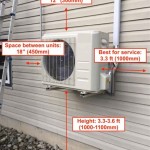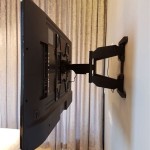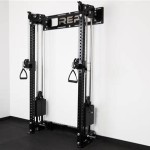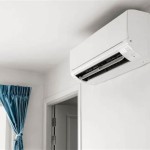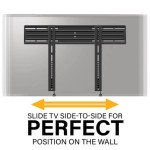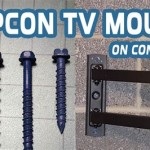Hydronic Fan Coils: A Comprehensive Look at Wall-Mount Units
Hydronic fan coil units are a common solution for providing heating and cooling in a variety of building types. These systems utilize water, circulated from a central boiler or chiller, to heat or cool air that is then distributed into a space. Among the different installation options, wall-mount hydronic fan coil units offer specific advantages and considerations. This article provides a detailed overview of wall-mount hydronic fan coil units, covering their functionality, benefits, installation considerations, maintenance, and common applications.
A hydronic fan coil unit, in its simplest form, consists of a coil through which hot or chilled water flows, a fan to force air across the coil, and a filter to remove particulate matter from the air stream. Wall-mount units are designed to be mounted directly on a wall, typically near the floor or ceiling, offering space-saving benefits compared to other installation types. They are often enclosed in a decorative cabinet to improve aesthetics and reduce noise.
Understanding the components and operation of a wall-mount hydronic fan coil unit is crucial for proper selection and maintenance. The coil is a critical element, designed to maximize heat transfer between the water and the air. The fan is selected to provide the necessary airflow to meet the heating or cooling load of the space. The filter protects the coil from dust accumulation, which can reduce efficiency and airflow.
Key Point 1: Advantages of Wall-Mount Hydronic Fan Coil Units
Wall-mount hydronic fan coil units offer several advantages over other types of heating and cooling systems. These advantages contribute to their popularity in various applications.
Space Efficiency: A primary benefit of wall-mount units is their space-saving design. By mounting directly on the wall, they eliminate the need for floor space, which is particularly valuable in smaller rooms or areas where floor space is limited. This makes them ideal for apartments, condominiums, and office spaces where maximizing usable area is important.
Individual Zone Control: Hydronic fan coil systems allow for individual temperature control in each zone or room. Each unit can be equipped with a thermostat that regulates the fan speed and water flow, enabling occupants to customize the temperature to their preference. This zonal control can lead to increased comfort and energy savings, as unoccupied areas can be heated or cooled less aggressively.
Quiet Operation: Modern wall-mount hydronic fan coil units are designed for quiet operation. Manufacturers employ various techniques, such as vibration isolation and sound-absorbing materials, to minimize noise levels. This is especially important in residential and office settings where a quiet environment is desired. Some units offer multiple fan speeds, allowing users to select a lower speed for even quieter operation.
Aesthetic Integration: Wall-mount units are often housed in aesthetically pleasing cabinets that can blend seamlessly with the room's décor. These cabinets are available in various styles and finishes to complement different interior designs. The sleek and unobtrusive design of these units contributes to a cleaner and more modern look compared to traditional radiators or window air conditioners.
Ease of Installation: Compared to ducted systems, wall-mount hydronic fan coil units can be relatively easier and less expensive to install. The installation process typically involves connecting the unit to the hot and chilled water supply lines, electrical connections, and mounting the unit on the wall. This simplified installation can reduce labor costs and minimize disruption to the building occupants.
Key Point 2: Installation and Design Considerations
Proper installation and design are crucial for the optimal performance and longevity of wall-mount hydronic fan coil units. Several factors must be considered during the planning and installation process.
Load Calculation: The first step is to accurately calculate the heating and cooling load of the space. This involves considering factors such as the size of the room, insulation levels, window area, orientation, and occupancy. A proper load calculation ensures that the selected unit has sufficient capacity to meet the heating and cooling demands of the room. Oversized units can lead to short cycling and reduced efficiency, while undersized units may not be able to maintain the desired temperature.
Water Piping: The design and installation of the water piping system are critical for efficient operation. The piping must be properly sized to ensure adequate water flow to each unit. Pressure drop calculations are necessary to determine the appropriate pipe sizes and pump capacity. In addition, the piping should be insulated to minimize heat loss or gain, especially in unconditioned spaces.
Electrical Connections: Wall-mount hydronic fan coil units require electrical connections for the fan motor and controls. The electrical wiring must comply with local codes and regulations. The units are typically powered by a standard electrical outlet, but larger units may require a dedicated circuit. Proper grounding is essential for safety.
Condensate Drainage: During cooling operation, condensation can form on the coil. A condensate drain line must be installed to remove this moisture. The drain line should be properly sloped to ensure gravity drainage and avoid water accumulation. A condensate pump may be necessary if gravity drainage is not possible.
Airflow and Placement: The location of the wall-mount unit should be chosen to maximize airflow and minimize obstructions. The unit should be positioned away from furniture or other objects that could block the airflow. The direction of the airflow can be adjusted to ensure proper air circulation throughout the room. In some cases, multiple units may be required to provide adequate coverage in larger or irregularly shaped spaces.
Accessibility for Maintenance: The unit should be installed in a location that allows for easy access for maintenance and repairs. The front panel should be easily removable for filter replacement and coil cleaning. Sufficient clearance should be provided around the unit to facilitate service work.
Key Point 3: Maintenance and Troubleshooting
Regular maintenance is essential for maintaining the performance and extending the lifespan of wall-mount hydronic fan coil units. Proper maintenance can also prevent common problems and ensure efficient operation.
Filter Replacement: The air filter should be replaced regularly, typically every one to three months, depending on the air quality and usage. A dirty filter can restrict airflow, reduce efficiency, and increase energy consumption. Replacing the filter is a simple and inexpensive task that can significantly improve the performance of the unit.
Coil Cleaning: The coil should be cleaned periodically to remove dust and debris that can accumulate over time. A dirty coil reduces heat transfer efficiency and can lead to reduced heating or cooling capacity. The coil can be cleaned with a vacuum cleaner and a soft brush. In some cases, a specialized coil cleaner may be necessary.
Condensate Drain Cleaning: The condensate drain line should be checked periodically to ensure that it is free of clogs. A clogged drain line can cause water to back up into the unit, potentially leading to water damage. The drain line can be cleaned with a wire or a drain cleaner. In some cases, it may be necessary to flush the drain line with water.
Fan Motor Lubrication: Some fan motors require periodic lubrication. Refer to the manufacturer's instructions for the recommended lubrication schedule and type of lubricant. Proper lubrication ensures smooth operation and prevents premature motor failure.
Thermostat Calibration: The thermostat should be calibrated periodically to ensure accurate temperature control. A miscalibrated thermostat can lead to inaccurate temperature readings and inefficient operation. The thermostat can be calibrated using a thermometer and adjusting the calibration screw on the back of the thermostat.
Common Troubleshooting Issues: Common problems with wall-mount hydronic fan coil units include low airflow, insufficient heating or cooling, excessive noise, and water leaks. Low airflow can be caused by a dirty filter, a clogged coil, or a malfunctioning fan. Insufficient heating or cooling can be caused by a low water flow rate, a dirty coil, or a malfunctioning thermostat. Excessive noise can be caused by a loose fan blade, a vibrating cabinet, or a worn-out motor. Water leaks can be caused by a clogged condensate drain line, a loose fitting, or a corroded coil.
Professional Service: For more complex repairs, it is recommended to consult a qualified HVAC technician. A professional technician has the training and experience to diagnose and repair problems safely and effectively. Regular professional maintenance can help prevent costly repairs and extend the lifespan of the unit.
In conclusion, wall-mount hydronic fan coil units offer a versatile and efficient solution for heating and cooling applications. Their space-saving design, individual zone control, and quiet operation make them a popular choice for various building types. Proper installation, design, and maintenance are essential for maximizing the performance and lifespan of these units. By understanding the key considerations discussed in this article, building owners and managers can make informed decisions about selecting, installing, and maintaining wall-mount hydronic fan coil units.

Amitime Residential Hydronic Small Ultra Thin Fan Coil Units Manufacturer Factory

Ultra Thin Fan Coil Pfp 060 Arctic Heat Pumps

Wall Mounted Fan Coil Hydronic Tekno Point Italia S R L Ceiling Duct

400cfm Chilled Water Hydronic Fan Coils Wall Mount Type 970 X 315 235mm

Amitime Bm Series Ultra Thin Hydronic Wall Mounted Fan Coil Units Manufacturer Supplier China

Hydronic High Wall Mounted Fan Coil Unit Individually Controlled Good Performance Air Conditioning Made In China Com

Air Conditioner Chilled Water Hydronic Wall Mounted Fan Coil Unit Fancoil Vertical Exposed Units Made In China Com

Hydronic Fan Coil Unit High Wall And Reversible 1 2 Ton

Hydronic High Wall Mounted Fan Coil Unit Individually Controlled Good Performance Air Conditioning Made In China Com

Hi Wall Hydronic Fan Coil Unit Caryaire Equipments


